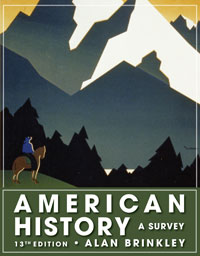1 A) There was a widespread speculative fever. B) The average price of most stock increased dramatically. C) The daily volume of stock traded increased dramatically. D) Most brokers required cash payment in full for stock purchases. E) Credit was easily obtained to those buying stock. 2 A) government regulation and trust busting had stifled free enterprise. B) there was a fundamental maldistribution of purchasing power. C) not enough profits were plowed back into business as new capital investment. D) low tariff policies had benefited foreign competitors and seriously damaged domestic industry. E) stock prices rose too dramatically. 3 A) inflating their currencies. B) draining their gold reserves. C) expanding exports to the United States. D) decreasing imports from the United States. E) getting new loans from the United States. 4 A) caused the Great Depression. B) was a result of the Great Depression. C) triggered a chain of events that led to the economic crisis. D) had no effect on the onset of the Depression. E) cause stock prices to increase dramatically. 5 A) by lobbying in Washington B) by withholding crops from the market C) by running its own candidates for state legislatures D) by establishing its own cooperative marketing facilities E) by protesting the Hawley-Smoot tariff 6 A) was caused solely by a particularly bad drought. B) was largely a result of farming practices on the Great Plains. C) caused the dust from the plains to blow as far as Chicago. D) only lasted for about a year. E) lasted throughout the Great Depression. 7 A) moonshiners trying to make a living in Appalachia. B) oil speculators losing money in the Southwest. C) swamp dwellers out of the mainstream in the Deep South. D) poor African-American farmers in the South. E) dispossessed farmers fleeing the Dust Bowl. 8 A) The migration of blacks to the North ended abruptly. B) Blacks suffered a higher unemployment rate than whites. C) Discrimination against blacks increased, particularly in competition for jobs. D) Local government and private relief benefits for blacks were smaller than for whites. E) Over half the blacks in the South in 1932 were unemployed. 9 A) Cuba. B) Mexico. C) Puerto Rico. D) Haiti. E) None of these answers is correct. 10 A) open up new opportunities for women in the professions. B) strengthen the belief that a woman's place was in the home. C) drive most women out of the labor force by the time the economic crisis was over. D) gain increased public support for such feminist organizations as the National Woman's Party. E) encourage women to get out of the home and work to support their families. 11 A) The birth rate declined. B) The marriage rate declined. C) The divorce rate increased. D) Middle-class and working-class families suffered traumatic impact. E) Working class families saw what little gains they had disappear. 12 A) a celebration of affluence. B) appeals to prurient interests in sex and crime. C) a return to traditional religious values. D) a deep social concern to portray the human consequences of the national economic disaster. E) upbeat and romantic messages as a sort of escapism. 13 A) Erskine Caldwell's Tobacco Road (1932) B) Margaret Mitchell's Gone With the Wind (1936) C) John Steinbeck's The Grapes of Wrath (1939) D) Richard Wright's Native Son (1940) E) James Agee's Let Us Now Praise Famous Men (1941) 14 A) rose throughout the decade. B) fell throughout the decade. C) rose initially but then fell as the Depression worsened. D) fell initially but then rose as the Depression worsened. E) stayed the same as before the Depression. 15 A) was a radio show about detectives in New York City. B) was a broad coalition of "antifascist" groups on the political Left. C) was one of the most successful programs of the New Deal. D) was a name given to the Nazi Party by the State Department. E) was a popular film staring the Marx brothers. 16 A) Coxey's Army. B) the Bonus Army. C) the Spanish Civil War. D) veterans of the American Expeditionary Force in World War I. E) The Grapes of Wrath. 17 A) fascism. B) Franklin Delano Roosevelt. C) racial injustice. D) nonpolitical unionism. E) Herbert Hoover. 18 A) vice president. B) secretary of state. C) secretary of commerce. D) speaker of the House of Representatives. E) secretary of navy. 19 A) aid struggling small farmers during poor harvests. B) impose government regulation on the commodities exchange market. C) establish quotas for the importation of foreign agricultural products. D) promote reciprocal trade agreements with foreign countries for agricultural products. E) keep farm prices up. 20 A) a recovery program for the banking industry. B) voluntary cooperation by business leaders in restoring the public confidence in the economy. C) a massive federal relief bill. D) creating millions of federal jobs. E) closing all banks. 21 A) a large-scale federal program of direct relief to the unemployed B) a system of government home-loan banks to assist mortgage holders C) the Reconstruction Finance Corporation to make loans to businesses D) the Hawley-Smoot Tariff to protect agriculture from foreign competition E) the Agricultural Marketing Act which helped to maintain farm prices 22 A) the Supreme Court declared it unconstitutional. B) its activities did not gain the support of President Hoover. C) its programs benefited primarily the small banks and family corporations. D) it was underfunded and overcautious in the use of the funds it did have. E) it could not raise farm prices.





